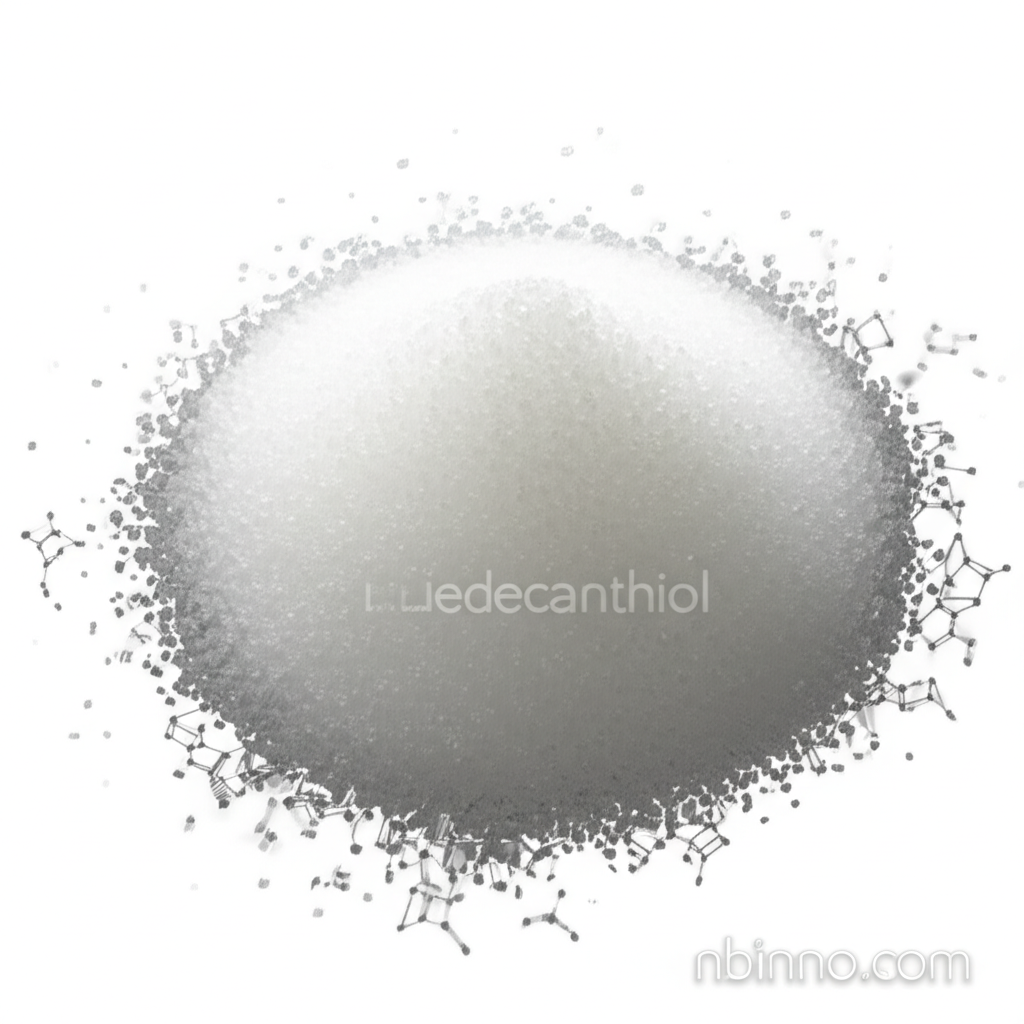Hexadecanethiol: Properties and Applications
Discover the critical role of Hexadecanethiol (CAS 2917-26-2) in electroplating and advanced material science.
Get a Quote & SampleProduct Core Value

Hexadecanethiol
Hexadecanethiol (CAS 2917-26-2) is a versatile chemical compound characterized by its white or off-white crystalline appearance and high purity, typically exceeding 99%. Its chemical structure, C16H34S, lends it unique properties, making it a valuable component in various industrial and research applications. Primarily utilized as an electroplating additive and chemical auxiliary, it plays a significant role in enhancing surface properties and facilitating complex chemical processes.
- Exploring the benefits of n-hexadecyl mercaptan for self-assembled monolayers. This compound is instrumental in creating highly ordered hydrophobic self-assembled monolayers (SAMs) due to its long alkane chain.
- Understanding the application of CAS 2917-26-2 in electroplating. As an additive, it contributes to improved surface characteristics and functionality in electroplating baths.
- The role of thiol-functionalized nanoparticles preparation using this chemical. It is employed in the creation of specific nanoparticles, often via ligand exchange processes.
- Detailed analysis of hexadecanethiol's chemical properties. Its solubility in organic solvents and insolubility in water are key factors for its effective utilization in various formulations and studies.
Key Advantages
Enhanced Surface Properties
As a critical component in electroplating, Hexadecanethiol helps achieve superior surface finishes and improved functionality, a key benefit for industrial applications.
Advanced Material Science Applications
Its use in the preparation of thiol-functionalized nanoparticles highlights its importance in cutting-edge material science research and development.
Formation of Highly Ordered Monolayers
The compound's structure is ideal for creating hydrophobic self-assembled monolayers, offering precise control over surface interactions and properties.
Key Applications
Electroplating Industry
Used as a chemical auxiliary and additive to improve the electroplating process and the resulting surface characteristics.
Nanotechnology Research
Essential in the study of nanoparticles and the preparation of thiol-functionalized gold nanoparticles.
Surface Science
Key ingredient in the formation of hydrophobic self-assembled monolayers (SAMs) for controlled surface interactions.
Chemical Industry
Serves as a valuable intermediate and auxiliary in various chemical synthesis and research endeavors.
